Introduction
How much does it really cost to rent a commercial kitchen in 2025? With foodservice demand surging and real estate prices fluctuating, the answer isn’t as straightforward as it used to be. Whether you’re launching a new catering venture or renovating your restaurant’s back-of-house, understanding rental costs is crucial to safeguarding your margins.
According to the U.S. Department of Agriculture Economic Research Service, spending on food away from home increased by over 16% between 2022 and 2024, fueling demand for flexible, rentable commercial kitchen spaces and accelerating interest in mobile and modular solutions.
In this guide, we’ll break down pricing by location, kitchen size, duration, and uncover hidden expenses like permits and compliance fees. By the end, you’ll have a clear roadmap to budget smartly and discover why mobile kitchens are reshaping the economics of temporary culinary spaces.
What Is a Commercial Kitchen for Rent?
A commercial kitchen for rent is a fully equipped and licensed food preparation space available to businesses and entrepreneurs on a short-term or long-term basis. Unlike a home kitchen, these facilities are designed to comply with FDA Food Code standards and pass local health inspections. They include:
- NSF-certified prep surfaces
- Commercial-grade refrigeration and ovens
- Sinks and dishwashing stations
- Food storage compliant with regulations
Who Uses Commercial Kitchens for Rent?
Commercial kitchen rentals serve a wide variety of food professionals and organizations, especially those who need a flexible, fully equipped space without the commitment of building or leasing a facility. Common users include:
- Caterers scaling up operations during busy seasons
- Meal delivery startups testing menus or expanding distribution
- Bakers and food artisans without storefronts
- Food truck operators who need extra prep or storage space
- Restaurants undergoing renovations
- Hospitality groups recovering from natural disasters
- Growing businesses needing temporary space to expand production
Note: Always confirm the facility has a valid commercial kitchen permit issued by the local health authority before use.

Average Costs to Rent a Commercial Kitchen in 2025
Pricing varies widely depending on location, size, and amenities, but here’s what you can expect:
Hourly Rates
- National average: $20–$65/hour
- High-demand cities (NYC, LA, SF): $75–$120/hour
- Secondary markets (Cleveland, Tampa): $25–$45/hour
- Rural/small town areas: As low as $15/hour
Note: Hourly rentals work well for pop-up operators, bakers, or businesses that need kitchen access a few times per week.
Monthly Rates
- Small kitchen (under 800 sq ft): $1,200–$2,500/month
- Mid-size kitchen (800–1,500 sq ft): $2,500–$4,000/month
- Large kitchen (2,000+ sq ft): $4,500–$7,000/month
Note: Monthly rentals are best for businesses with consistent production needs or large teams requiring reliable access.
Other Costs to Expect

Tip: Always request a fee schedule before signing a contract.
Key Factors Affecting Rental Cost of Commercial Kitchens
Commercial Kitchen Size
Size directly influences cost. Larger spaces accommodate higher volume production but cost more to rent.
Common size categories:
- Small (500–800 sq. ft.): Ideal for solo operators
- Medium (800–1,500 sq. ft.): Suitable for growing teams
- Large (2,000+ sq. ft.): For high-volume caterers and co-packers
A recent industry survey found that every 500 sq. ft. of space adds approximately $1,000–$2,000/month in rental fees.
Location and Market Demand
Kitchens in metro areas with high demand command premium rates. For example:
- San Francisco: Up to $120/hour
- Atlanta: Around $55/hour
- Des Moines: As low as $25/hour
Note: Some cities offer incentives for shared commercial kitchens in food deserts or underserved neighborhoods.
Tip: Use your city’s zoning map or contact your Small Business Development Center (SBDC) for support.

Permits and Compliance Requirements
A commercial kitchen permit is mandatory and affects cost in two ways:
- Application fees: Vary by state ($300–$1,500)
- Ongoing inspections and compliance: Potential upgrade costs to meet codes
Example: In California, form DEH 3052 (Commissary Agreement) is required for mobile food operators. Learn more at the CDPH.
Tip: Check if your rental provider holds these permits or if you need to apply independently. Permit costs and delays can add thousands to your startup timeline.
Equipment and Amenities
High-end kitchens may include premium features like:
- Blast chillers and combi ovens
- Gas lines and propane hookups (NFPA 58)
- Walk-in refrigerators and freezers
- Private storage lockers or dry storage
- Fire suppression systems (NFPA 96)
- Secure keyless entry
- Wi-Fi and printer/copier access
These perks can increase rates but also improve workflow and reduce operational stress.

How to Budget for a Commercial Kitchen Rental
Here’s a simple formula to estimate monthly expenses:
Base Rent + Utilities + Cleaning + Insurance + Permits = Total Monthly Cost
Example Budget for a Medium Kitchen in Chicago:
- Base rent: $3,000
- Utilities: $300
- Cleaning: $200
- Insurance: $100
- Permit fees (monthly amortized): $150
Estimated Total: ~$3,750/month
Tip: Always build a 10–15% contingency for unexpected costs.
4 Ways to Save on Commercial Kitchen Rentals
1. Opt for Off-Peak Hours
Many commercial kitchens offer lower rates during late night or early morning hours, when demand is lower. If your operations are flexible, booking time during non-peak windows can reduce hourly costs by 15–30%. This is especially useful for bakers, prep-focused businesses, or ghost kitchens that don’t rely on storefront traffic.
2. Co-Share Space with Other Small Businesses
If you don’t need a kitchen full-time, consider splitting the rent with a non-competing food business. For example, a morning juice company and an evening catering team can share a single space without overlapping. Co-sharing reduces base rent, utility costs, and cleaning fees - making kitchen access more affordable for both parties.
3. Negotiate a Long-Term Rental
Many kitchen operators are willing to offer discounted monthly rates in exchange for longer commitments (e.g., 6 or 12 months). If your business has predictable production needs, locking in a rent can save hundreds each month. Always ask if the facility offers tiered pricing or incentives for extended use.
4. Use Grant Funding or Join a Food Incubator
Many cities offer grants, low-interest loans, or food incubator programs to support local food entrepreneurs. These programs may cover a portion of your rental costs, help you access shared-use kitchens at reduced rates, or provide business mentorship. Check with your local Small Business Development Center (SBDC) or economic development office for opportunities.
When Should You Rent a Mobile Commercial Kitchen?
A mobile commercial kitchen is a turnkey solution that offers flexibility, speed, and compliance for businesses that need a temporary cooking space. These units often come with built-in equipment, fire suppression systems, permitting, and utility hookups, making them faster and more cost-effective to deploy than traditional rentals.
Mobile kitchens are ideal for:
- Short-term needs (0–6 months):
- Restaurant kitchen renovations
- Seasonal festivals or pop-up events
- Disaster recovery (e.g., fire, flooding, national emergencies)
- Mid-term needs (6–18 months):
- Expanding production during a growth phase
- Operating in a temporary location while securing a permanent site
- Pilot programs or market testing in a new region
While base rental fees for mobile kitchens may be higher, they typically eliminate the hidden costs of equipment rental, permitting delays, and setup logistics. For many businesses, the speed to launch and all-in-one convenience make them a smart investment, especially when time and flexibility matter most.
.jpeg)
How Mobile Culinaire Simplifies the Commercial Kitchen Rental Process
Flexibility & Mobility
When renting a traditional commercial kitchen, you're often limited by zoning, long-term rental, and fixed locations. Mobile Culinaire eliminates these constraints with kitchen trailers that can operate anywhere, from festivals to construction sites. This flexibility means you’re not tied down by a single address and can move your operation to wherever demand exists, all while staying compliant with health and safety codes.
Cost Efficiency
The cost of renting a commercial kitchen, especially in urban markets, can quickly add up with monthly rental rates, insurance, cleaning, and permitting. Mobile Culinaire provides a cost-effective alternative by bundling all essentials into one unit, helping you avoid unnecessary build-out expenses or long-term rental commitments. For temporary or seasonal operations, this can reduce your capital outlay by tens of thousands of dollars.
Rapid Deployment
Securing a conventional commercial kitchen space often takes months, between plan reviews, inspections, and permitting delays. Mobile Culinaire’s kitchens are built to health and fire codes from day one, making it possible to launch or resume production within days or weeks. This speed is especially valuable during emergencies, renovations, or tight go-to-market windows.
Reduced Business Risk
Renting a full-scale commercial kitchen involves utility setup and infrastructure costs - all high-risk if your concept is unproven. Mobile Culinaire helps reduce that risk by offering mobile kitchens on flexible terms, so you can test new menus, service models, or markets without being locked into fixed overhead or sunk costs.
Note: Learn why mobile kitchen trailers are the perfect temporary kitchen solution in our full guide here!

Final Thoughts
Renting a commercial kitchen in 2025 requires thoughtful budgeting and due diligence. From commercial kitchen size and location to permitting and amenities, every factor impacts the bottom line. By comparing options, including flexible mobile kitchens, you can find a setup that meets both your operational needs and your budget.
If you’re looking for a solution that’s ready to deploy quickly with predictable costs, consider exploring mobile kitchen rentals that combine flexibility, compliance, and cost control in one package.
Browse Mobile Culinaire’s mobile kitchen rentals or contact our team to customize a rental plan that meets your kitchen size, permit, and budget requirements!
People Also Ask (FAQ)
What is the average hourly rate for a commercial kitchen in 2025?
Most commercial kitchens rent for $20–$65 per hour in 2025. Rates vary based on location, kitchen size, and included equipment. In cities like New York or San Francisco, hourly prices can exceed $100. Rural areas and off-peak hours tend to be more affordable.
How do I know what size kitchen I need?
Smaller operations typically need 500–800 sq. ft., while mid-size businesses may require 800–1,500 sq. ft. High-volume caterers and commissaries often need 2,000+ sq. ft. Plan for at least 100–150 sq. ft. per worker to ensure safe, efficient workflows.
What permits are required for commercial kitchens?
Most kitchens require a local health permit, food handler certifications, and a business license. You may also need fire department approval and a commissary agreement if you're a mobile operator. Some facilities provide these permits, while others expect you to apply separately.
.avif)
.svg)

.avif)
%20(1).jpg)
.jpg)
.jpg)
%20(1).jpg)
.avif)
.avif)
%20(1).jpg)
.jpeg)
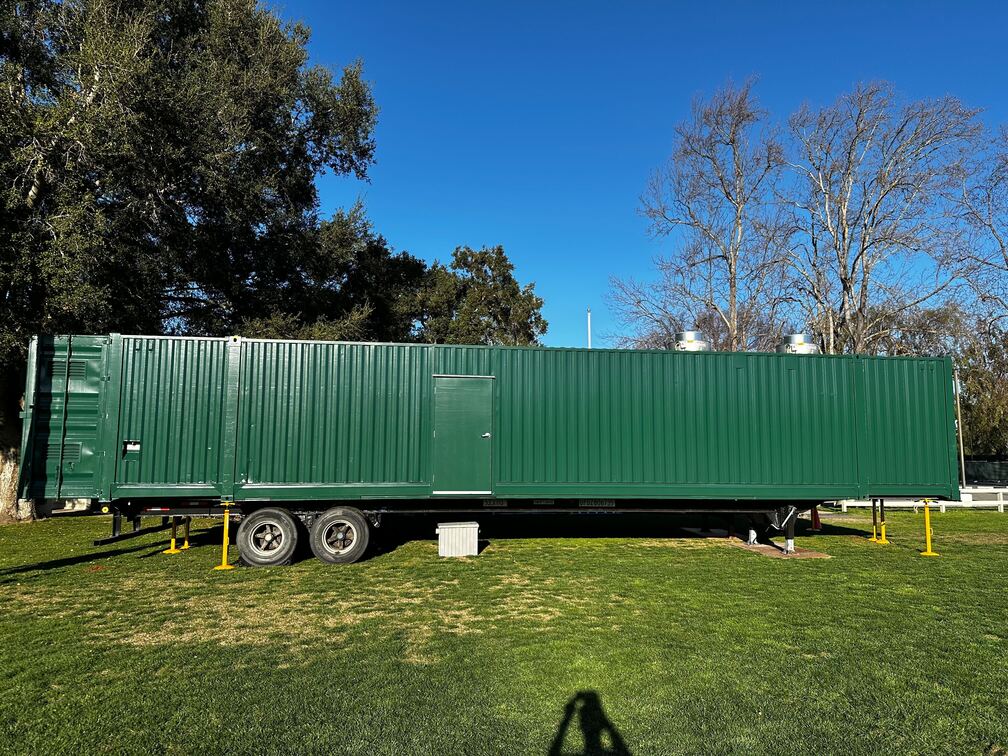
.jpeg)
%20(1).jpg)
%20(2).jpg)


%20(1).jpg)
%20(1).jpeg)
.jpg)
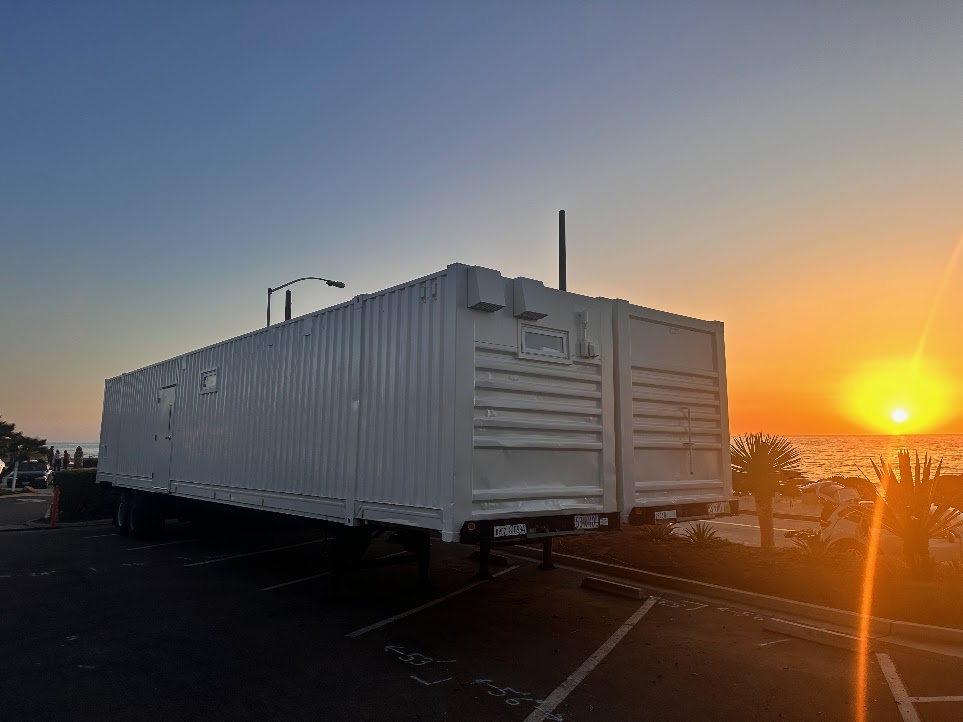
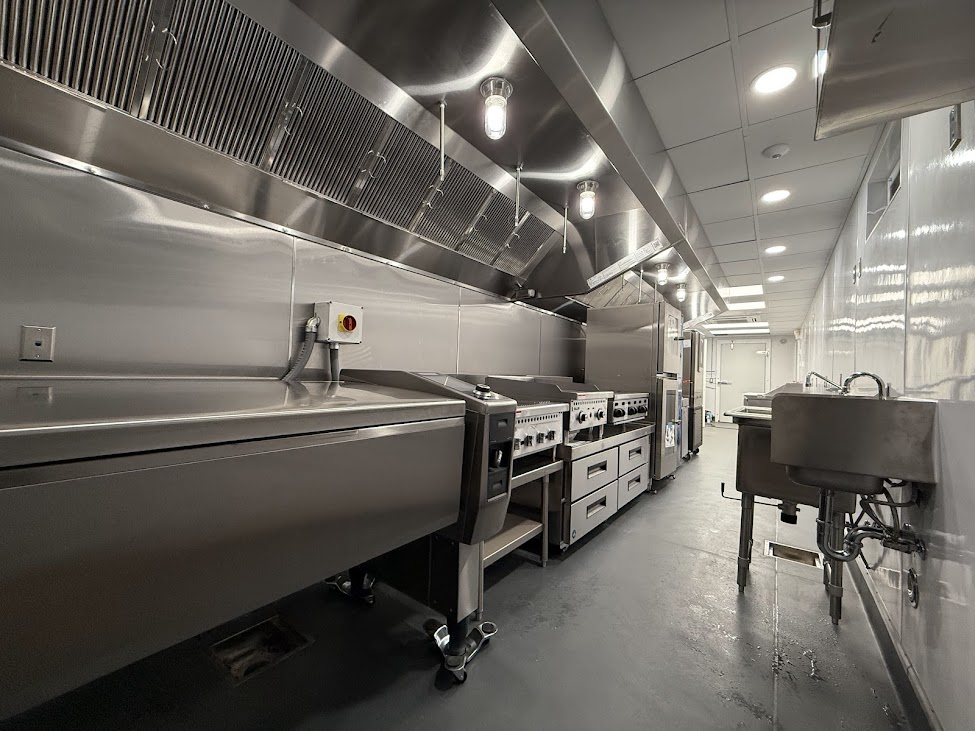
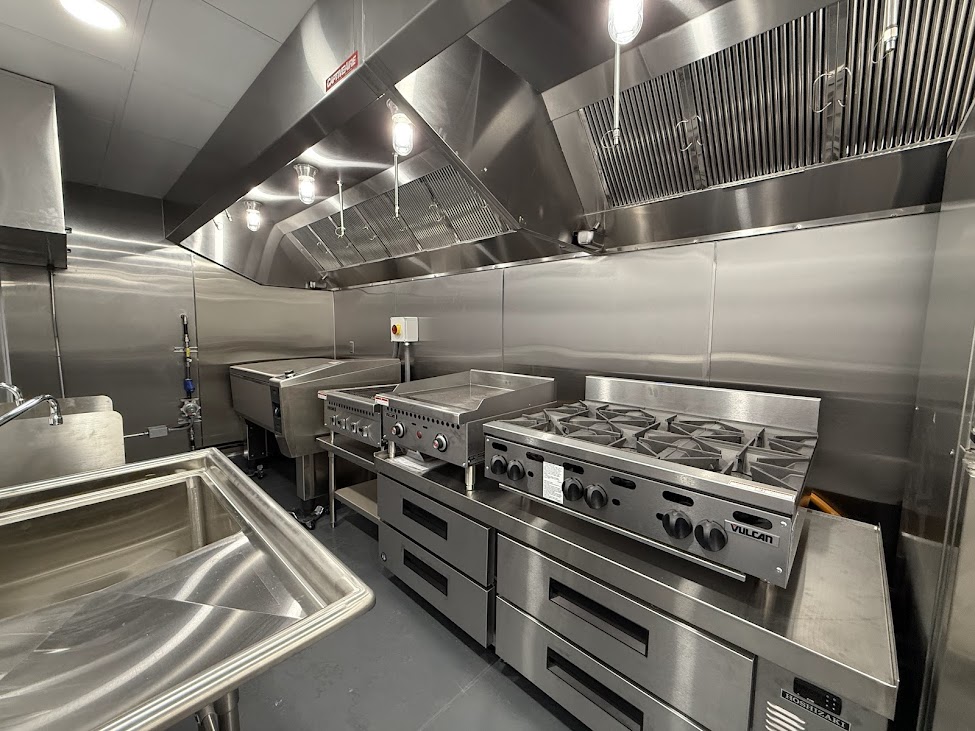
%20(2).avif)
.avif)
%20(1)%20(1).avif)
.avif)
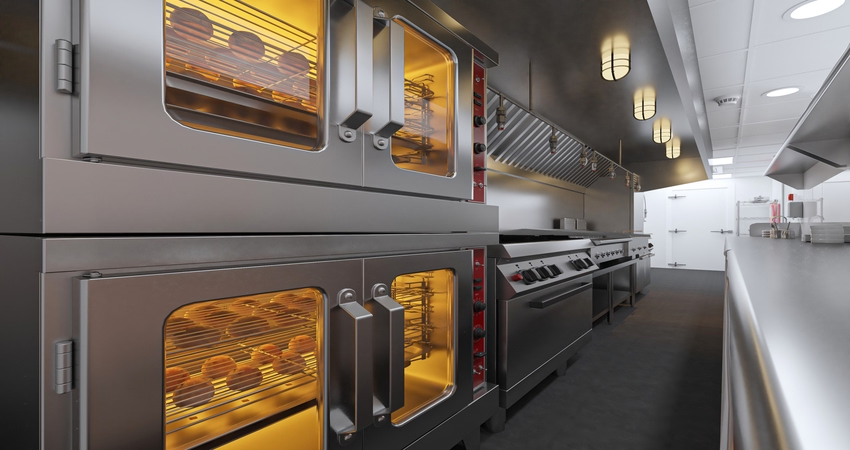
%20(1).avif)
%20(1)%20(1).avif)
%20(2).avif)
%20(1).avif)
%20(1).avif)
.avif)
%20(1)%20(1).avif)
%20(1).avif)
%20(1).avif)
%20(1).avif)
%20(1)%20(1).avif)

.svg)



